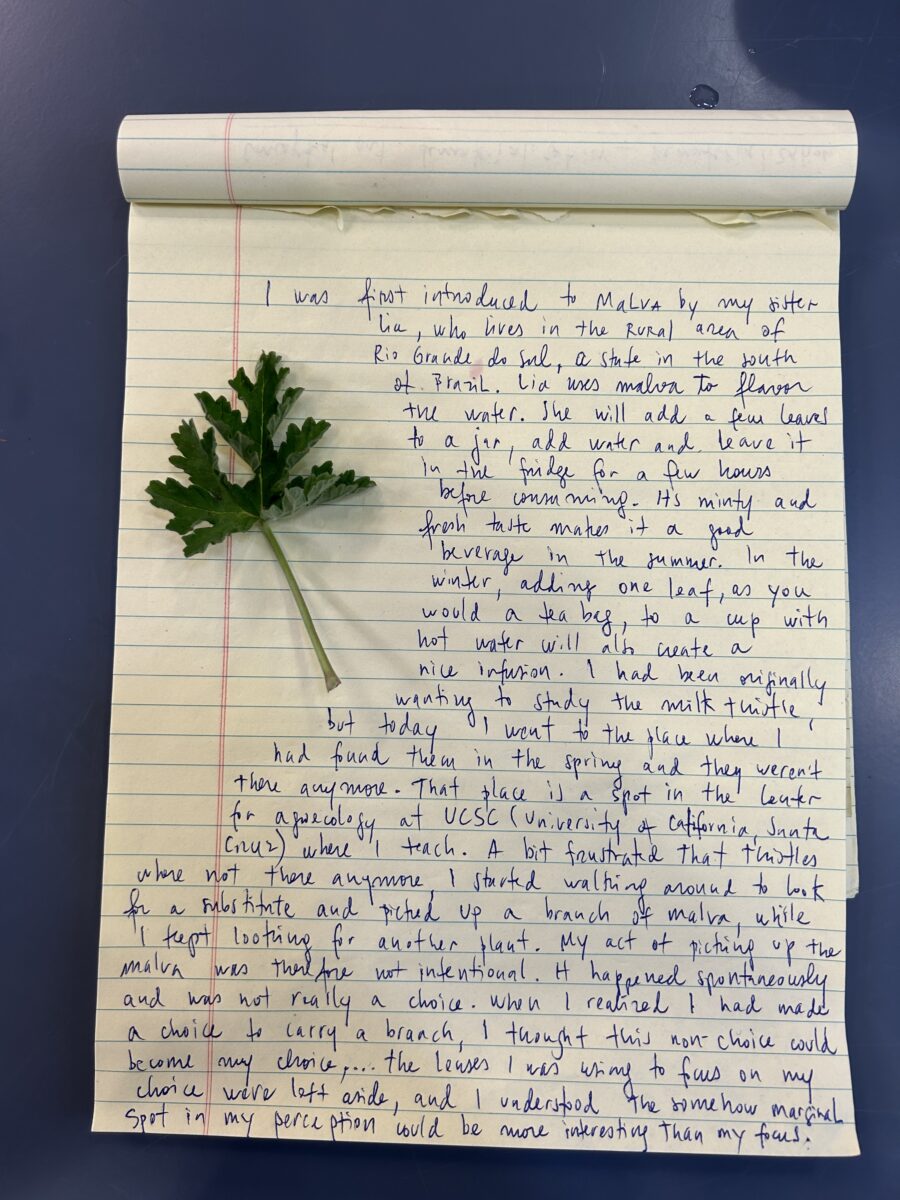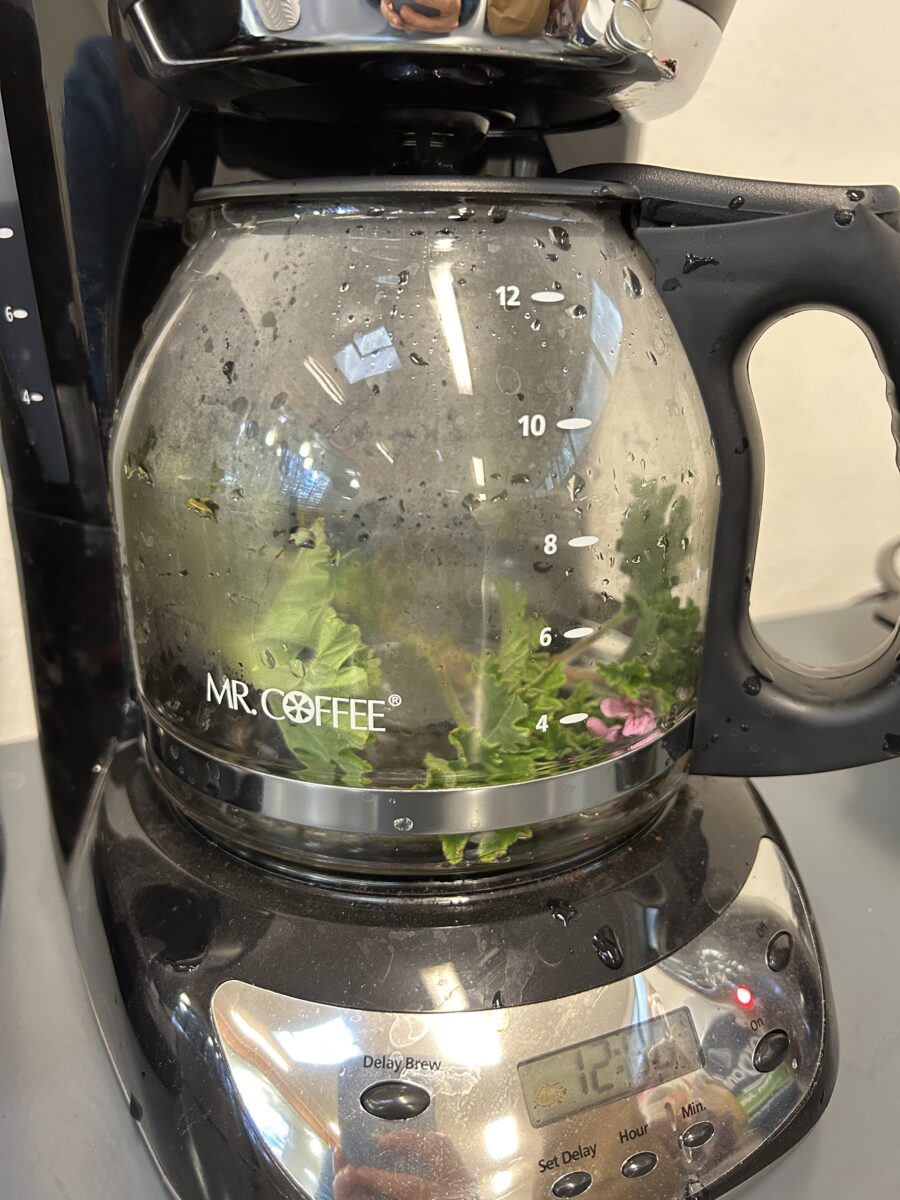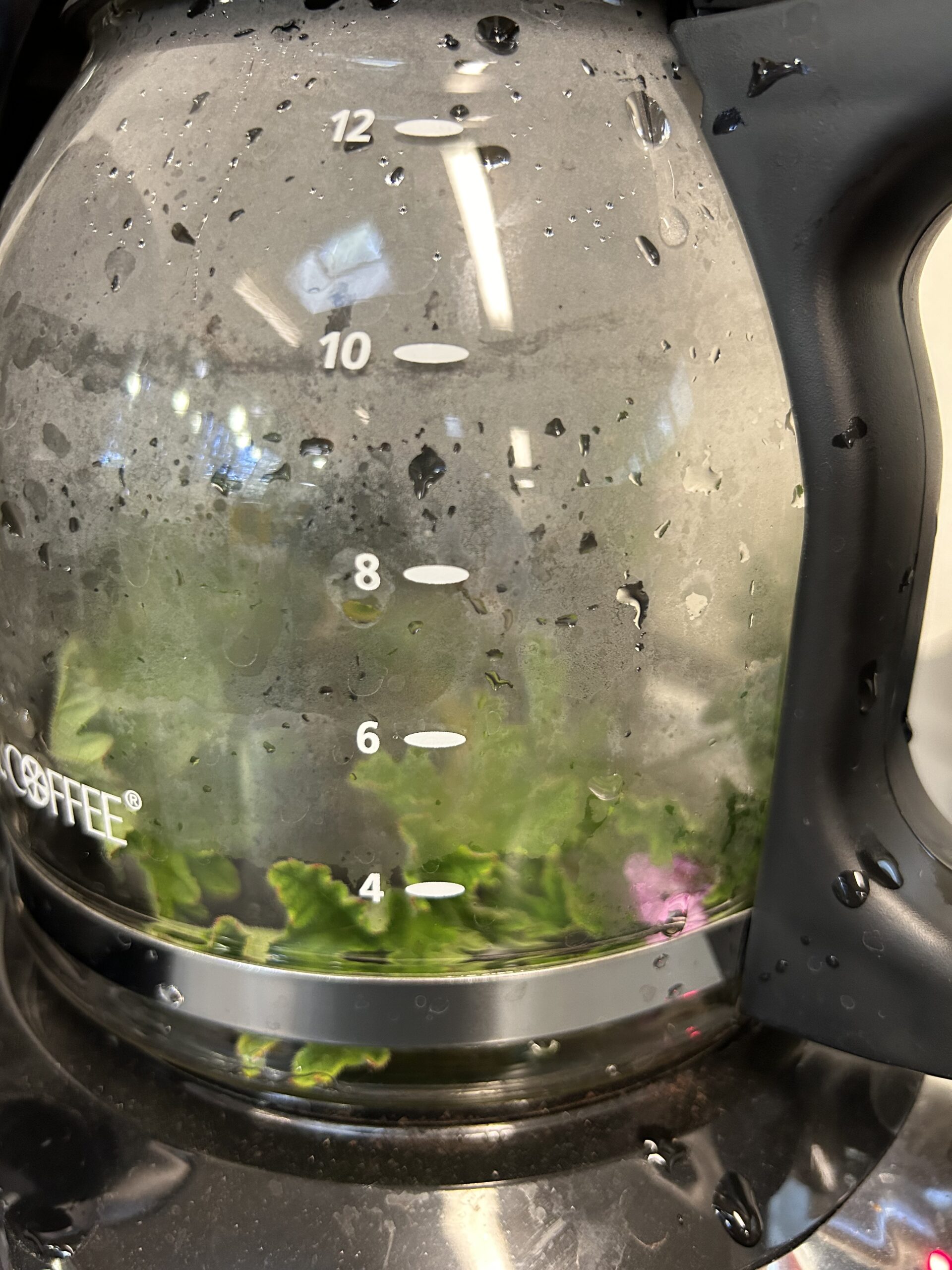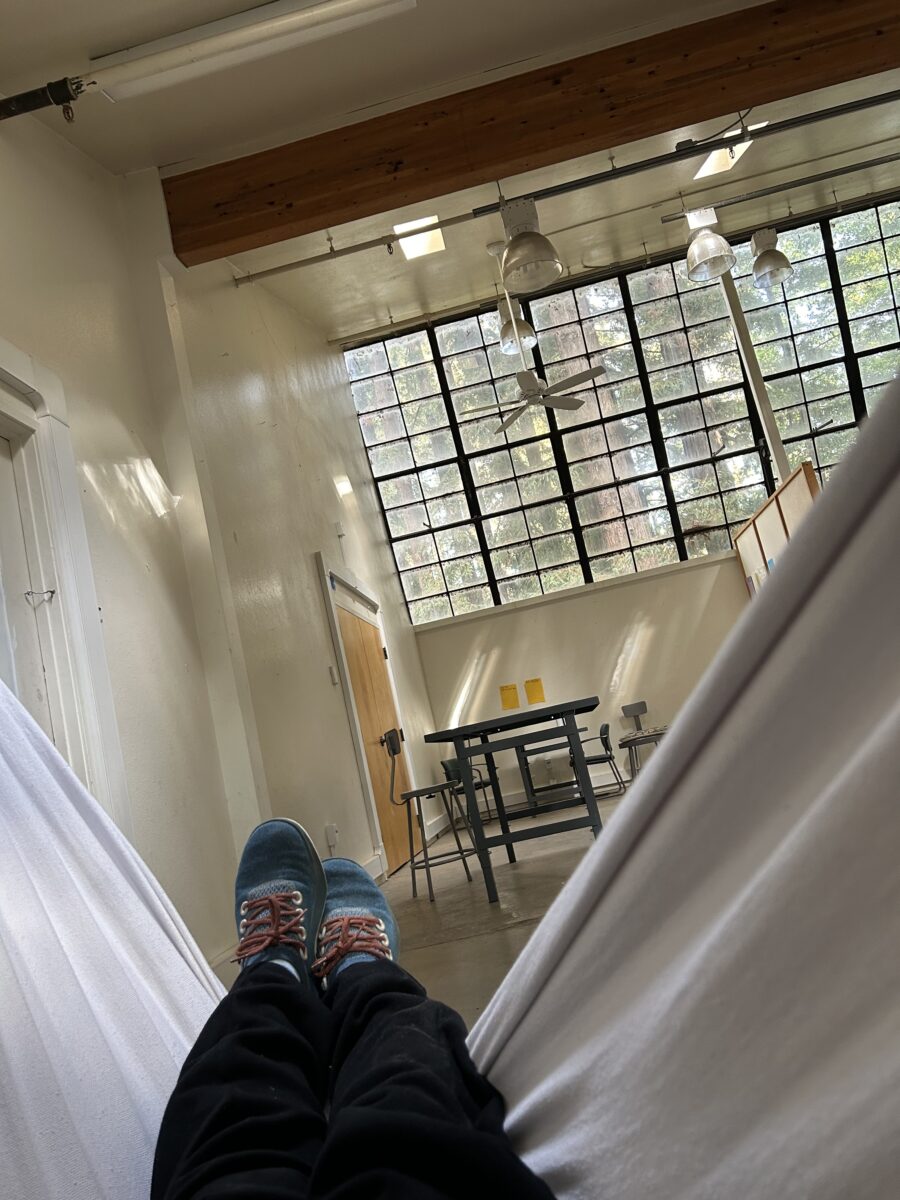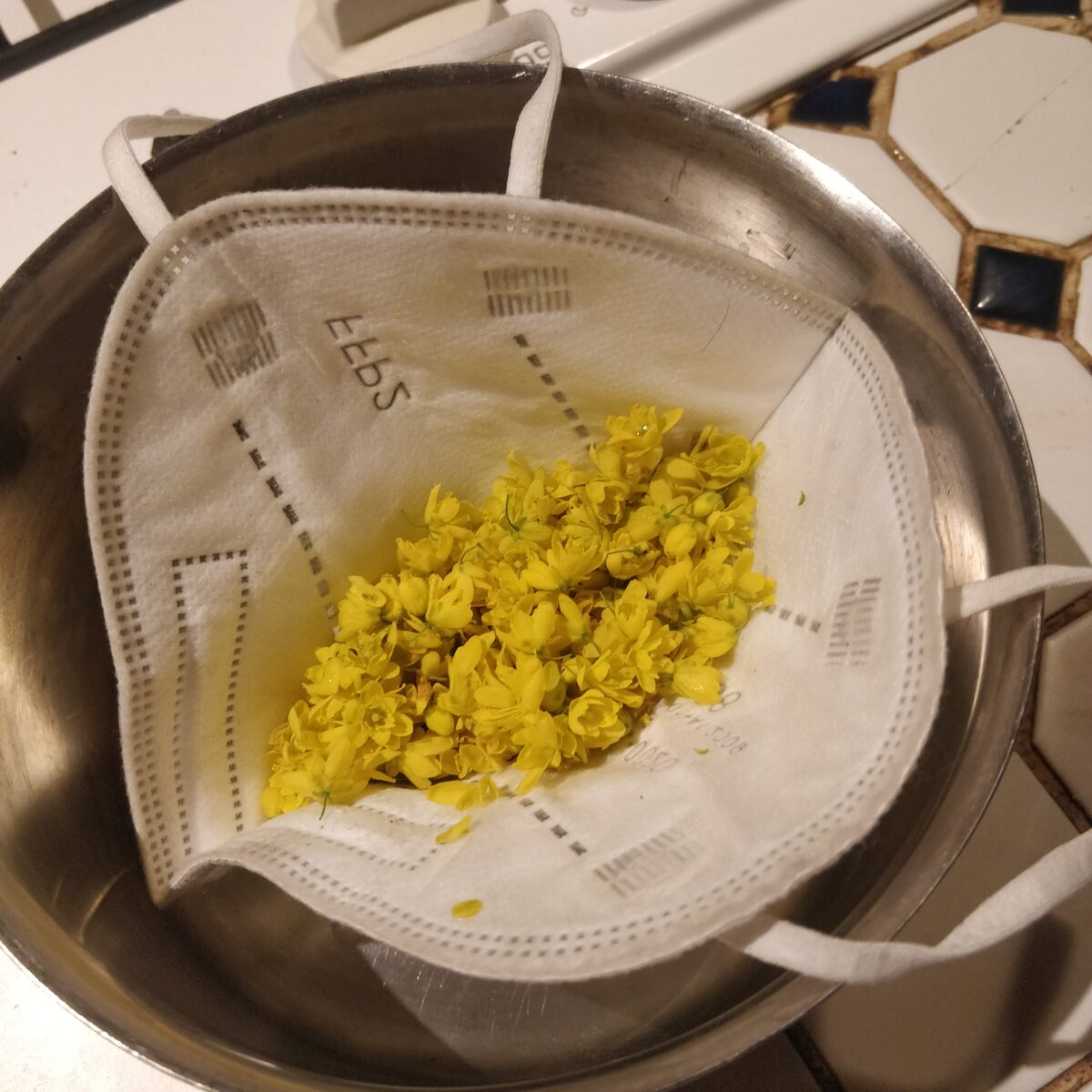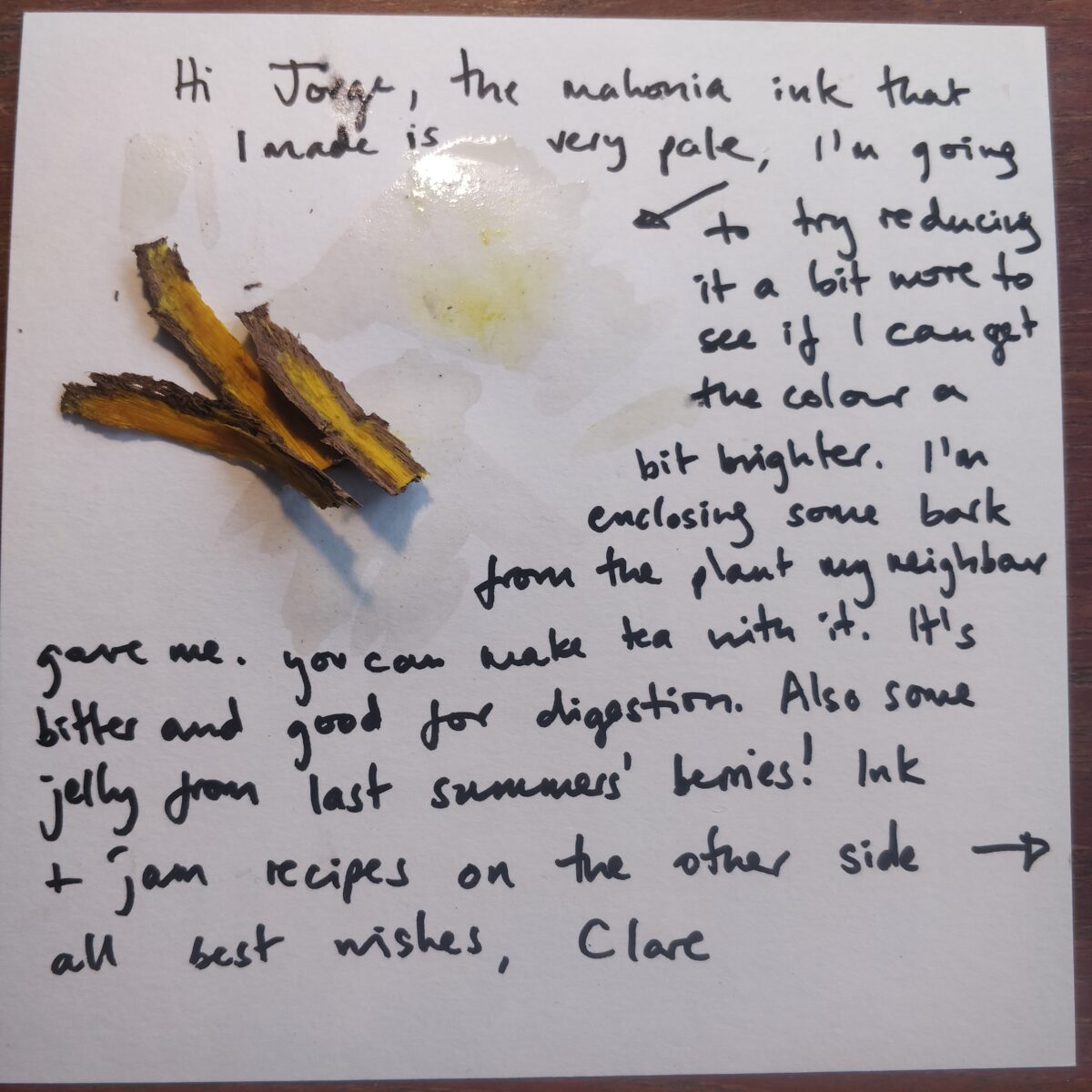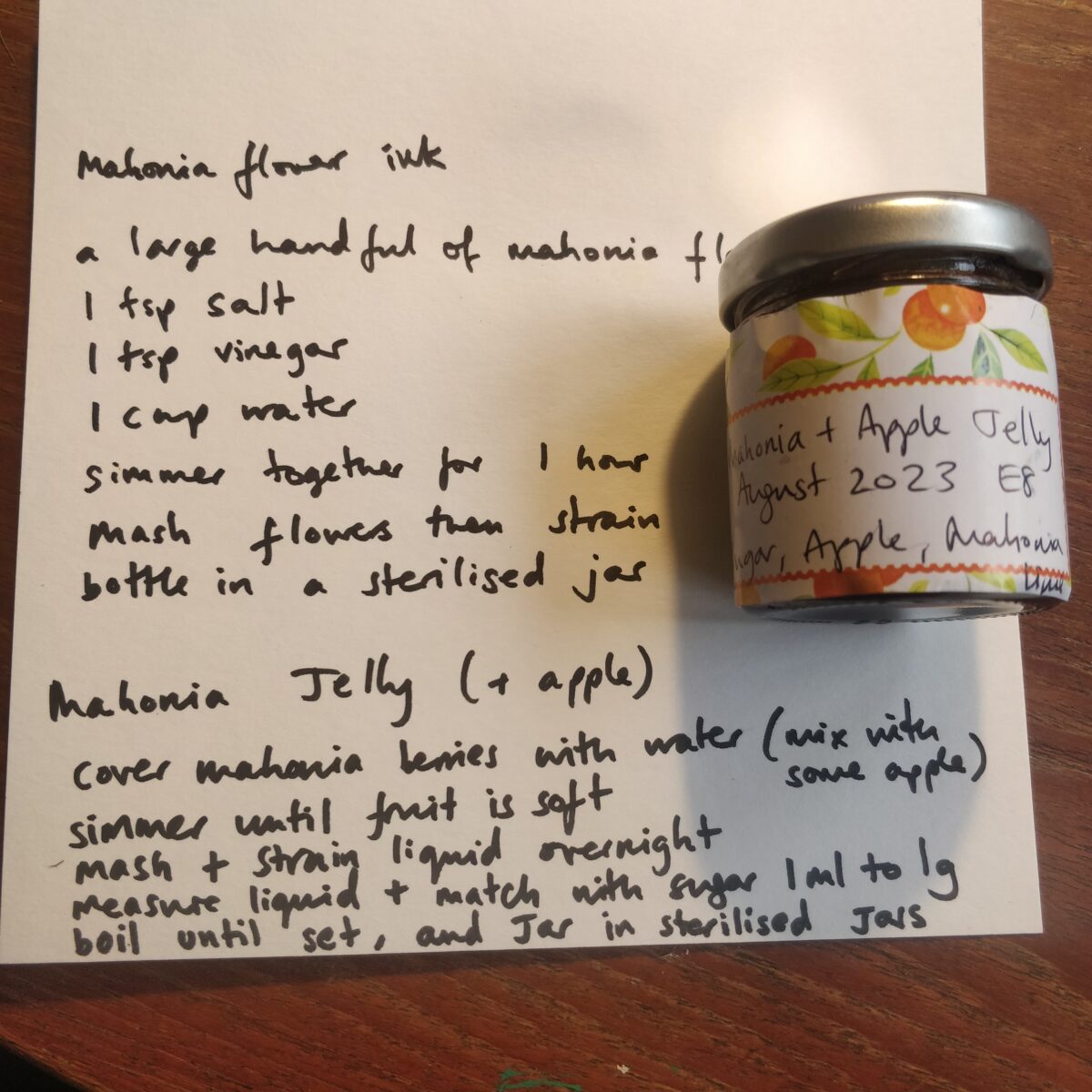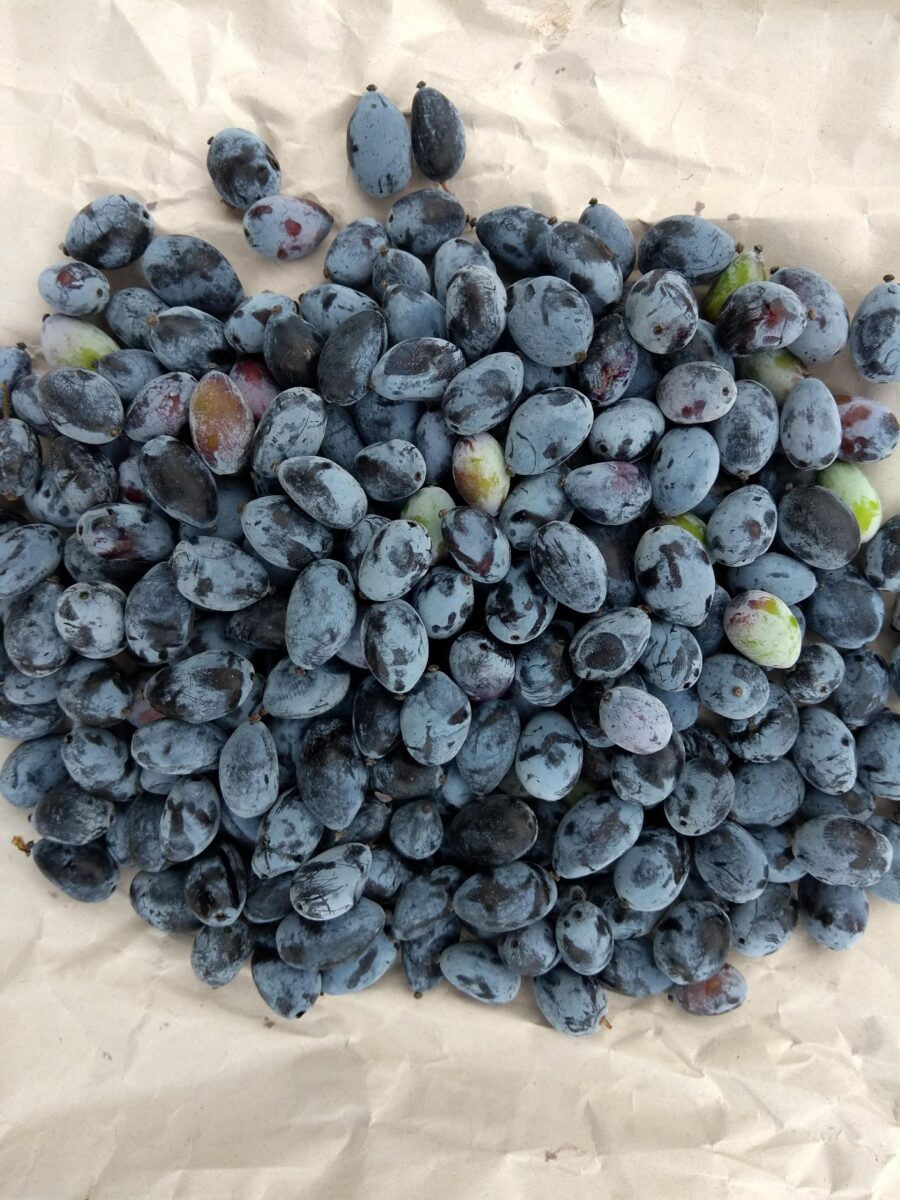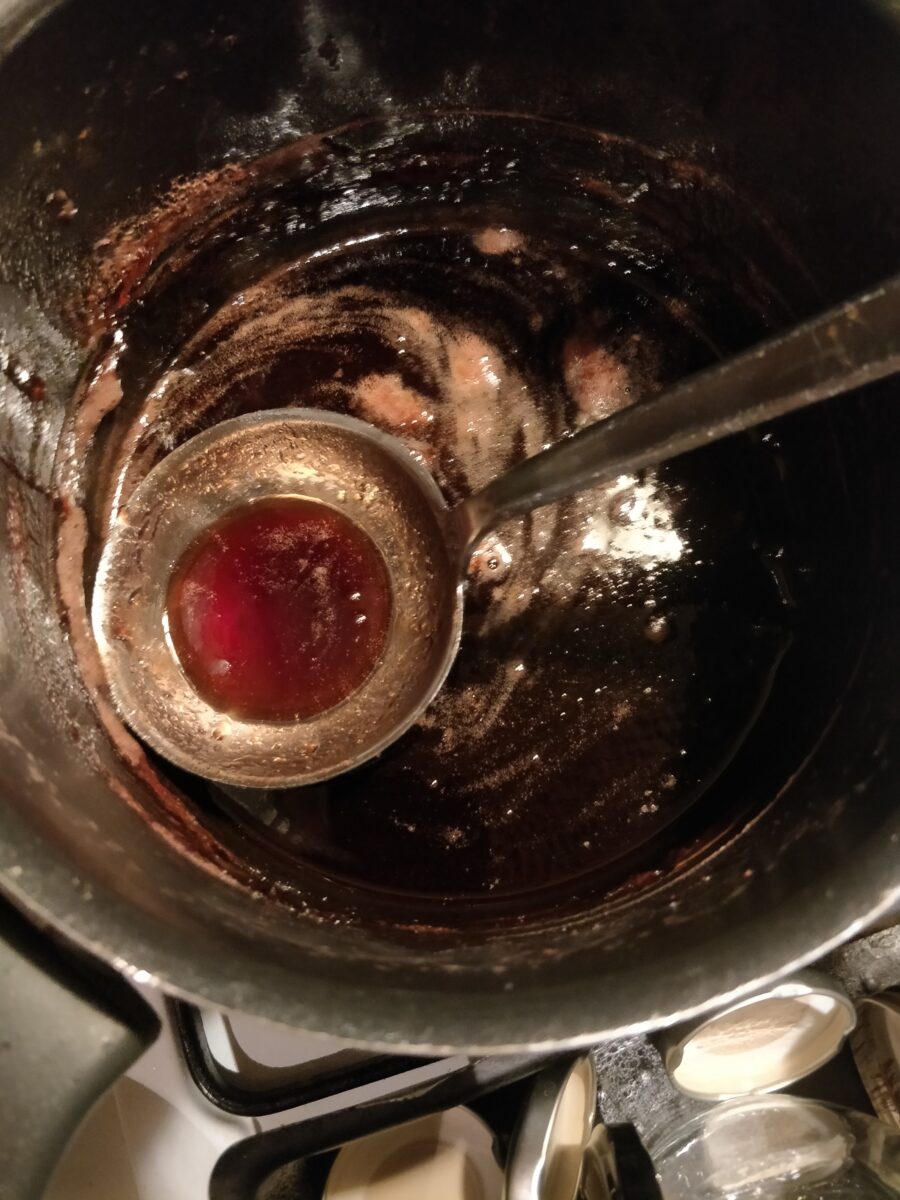Mahonia & Malva
Jorgge Menna Barreto and Clare Qualmann share a written correspondence about plants that are often regarded as ‘useless’ weeds or planted in ‘waste’ lands in public spaces. They offer each other recipes for connecting with plants, seasonality, tracing traditional or medicinal uses and and a desire to rethink how we direct attention towards overlooked plants in our own environments.
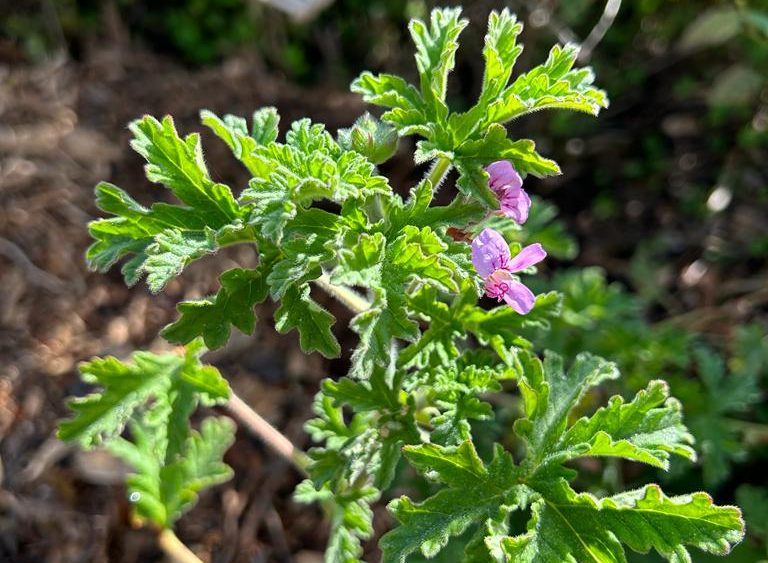
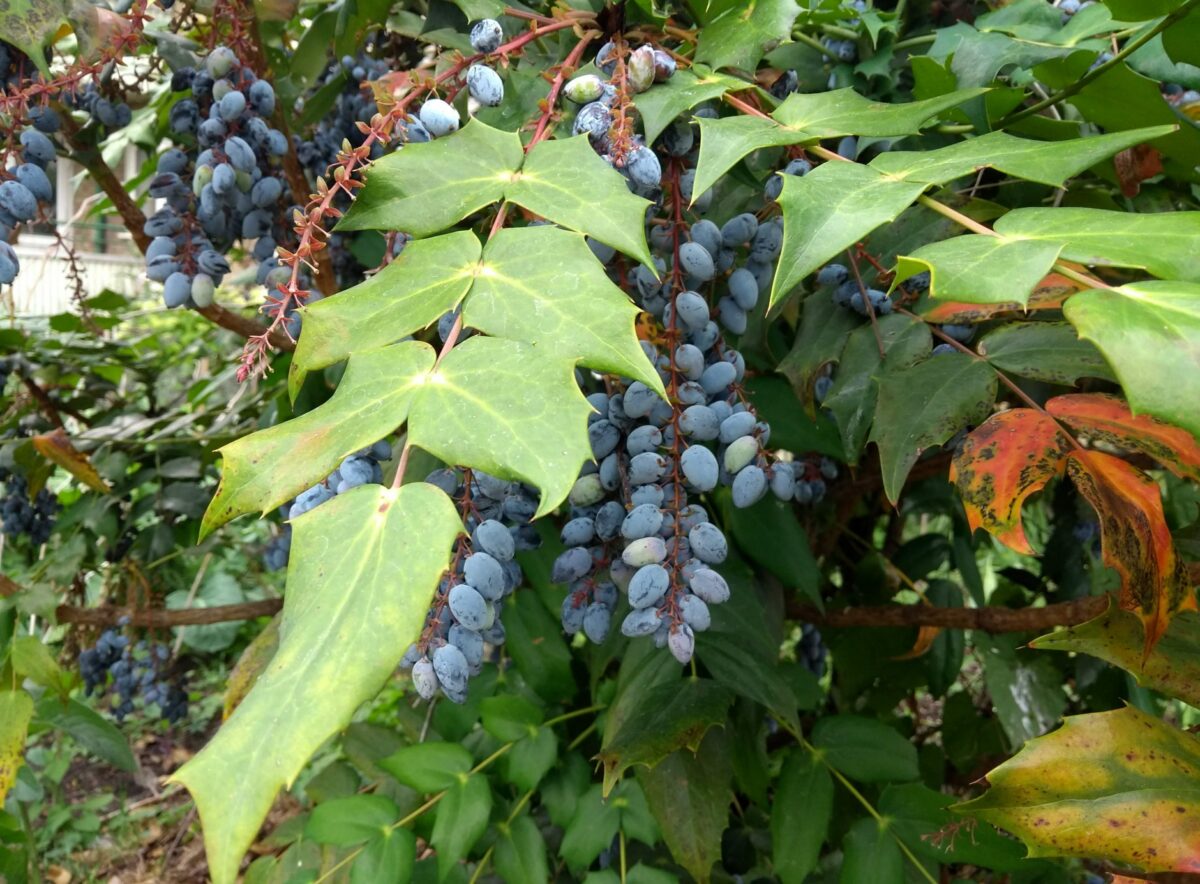
Clare Qualmann, Mahonia
At the entrance to Lidl, in the corner of the car park, behind a giant billboard, is a mahonia. Actually, it is more than one. A cluster of large bushes. They are quite hidden, both from the road and from the car parking spaces. But if you use the bike racks then you see them. They are in a corner that is cut off from use and from sight. The kind of space it would be possible to pitch a tent without being noticed, the sort of place that used to lure me as a kid: a great place for a den. The mahonia are quite tall and bushy, with thick trunks and glossy spiky foliage. The ground around them is covered in bark chippings. This seems to me the classic London spot for mahonia, I get the impression that they are planted as space filler, hardy-in-any-shade, prickly-deterrent for “anti-social” behaviour (like sleeping).
The ones along the edge of the sandpit at the playground have a similar feel: like they are there to stop people climbing over into the gardens behind. Almost all of my photographs of mahonia in London have rubbish in the background, or something that gives them a gritty edge. On the edge of the park (London Fields) a tall Mahonia is planted up against a wall, facing the tennis courts. My kids like to sit underneath it, eating the sour fruit straight from the branches. The birds know it is there too – they strip it before long.
Mahonia is a genus of evergreen shrub plants which was previously thought to be part of the Berberis family (some botanists still group them together). They are native to north and central america, and to eastern asia. They originated in North America, crossing the north atlantic land bridge around 35 million years ago. Two family groups (for each of these regions) are now identified: the orientales from Asia and the occidentales from North America. Mahonia contains berberine (hence the grouping with Berberis) and in both Asia and North America is used in traditional medicine for stomach ailments (eaten/drunk in tea) and for skin issues like psoriasis (applied topically). The bark and root when stripped are bright yellow, and make a bitter tea or tincture. They can also be used for dye. The berries are very sour and although they are edible, traditionally they were not favoured as foodstuff. The yellow flowers can also be brewed for tea or fermented for a sweet drink.
Jorge Menna-Bareto, Malva
I was first introduced to Malva by my sister Lia who lives in the rural area of Rio Grande de Sol a state in the south of Brazil. Lia uses Malva to flavour the water. She will add a few leaves to a jar and leave it in the fridge for a few hours before consuming. It’s minty and fresh taste makes it a good beverage in the summer. In the winter adding one leaf, as you would a tea bag to a cup with with hot water will also create a nice infusion. I had been originally wanting to study milk thistle but today I went to the place where I had found them in the spring and they were not there anymore. That place is a spot on the land for agroecology at UCSC where I teach.
A bit frustrated that thistles were not there anymore I started walking around to look for a substitute and picked up a branch of malva while I kept looking for another plant. My act of picking up the Malva was therefore not intentional. It happened spontaneously and was not really a choice. When I realised I had made a choice to carry a branch I thought this non-choice could become my choice…. the lenses I was using to focus on my choice (Thistle) were left aside and I understood that the somehow marginal spot in my perception would be more interesting than my focus.
-
Correspondence
